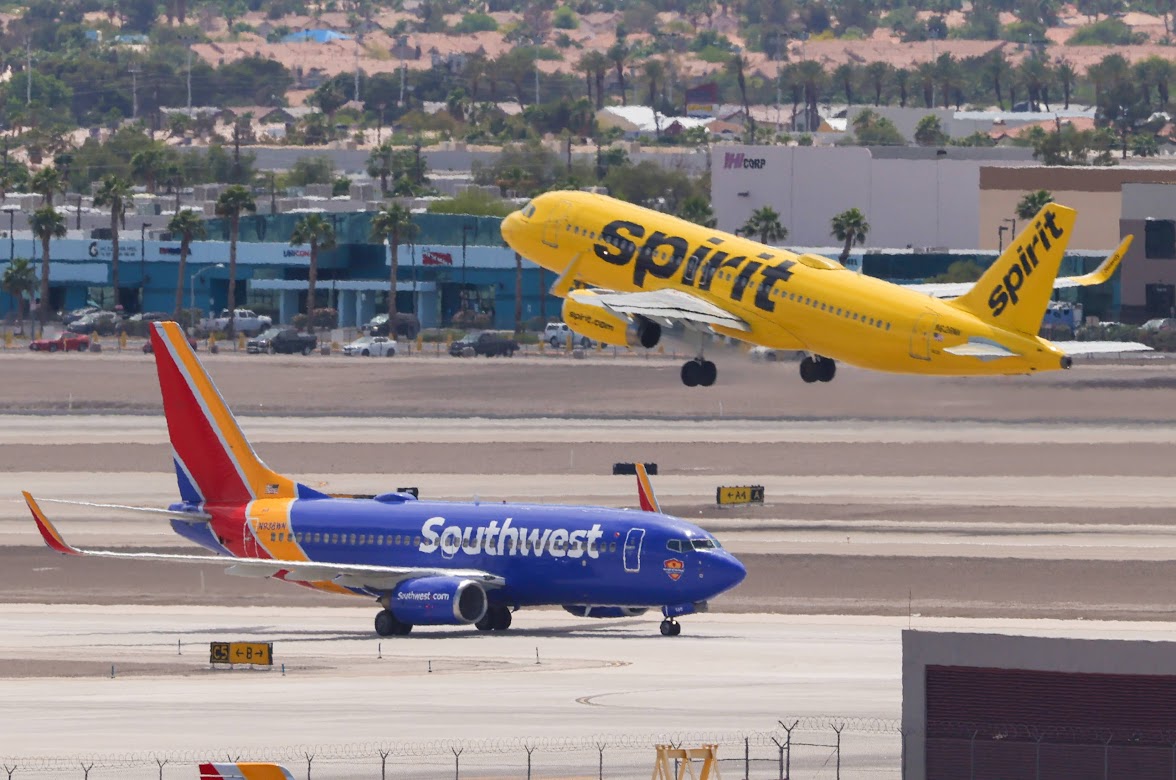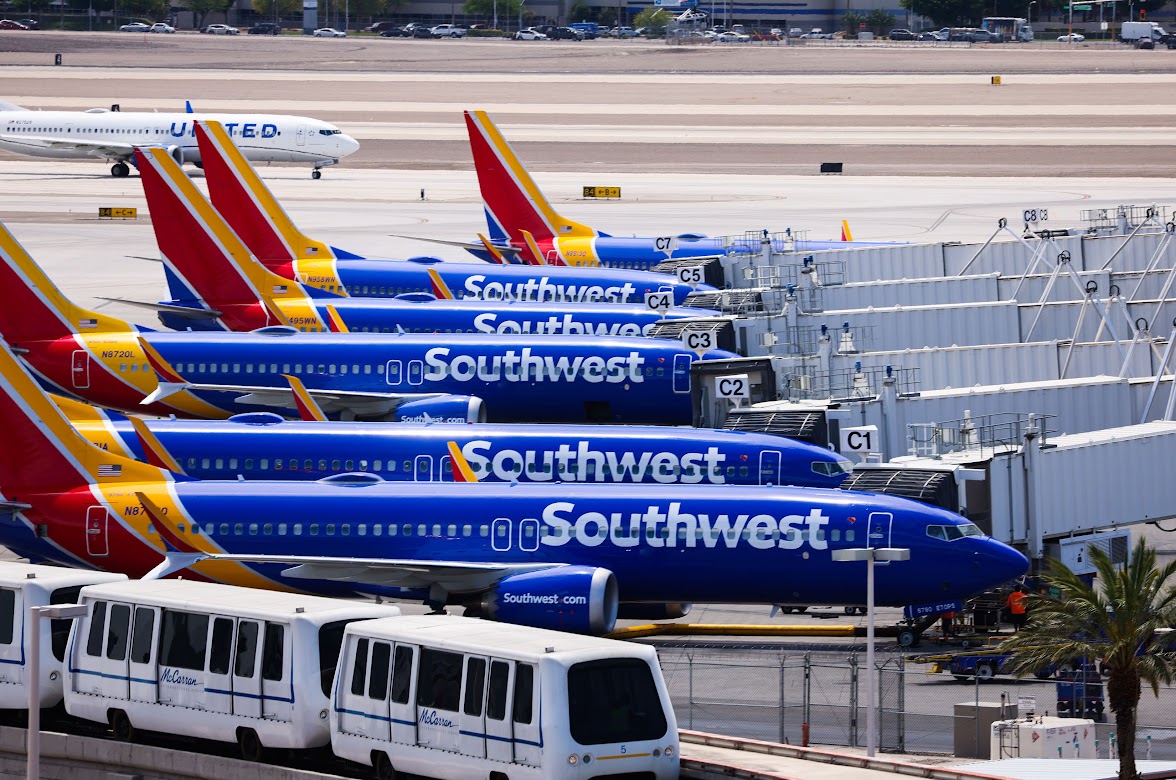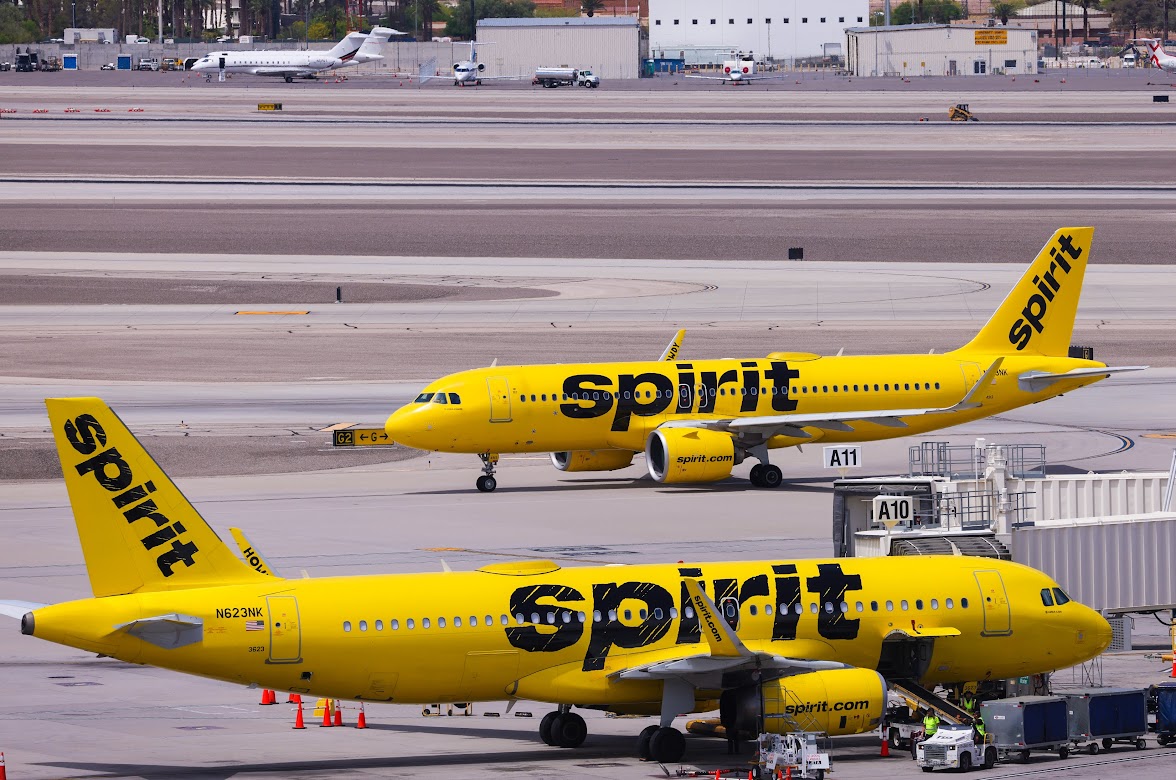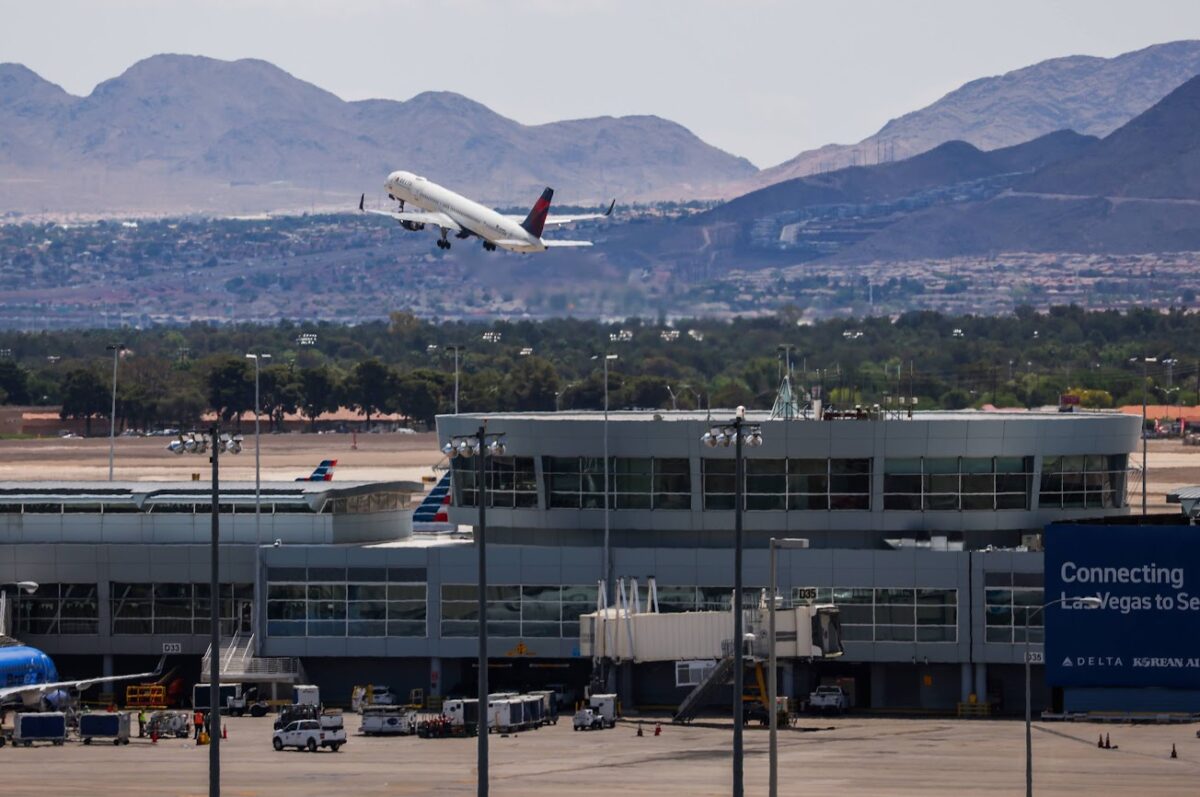Blame it on the winds: Southwest, Spirit lament flight delays at Reid Airport

Unusual wind patterns coupled with the shutdown of two runways for a scheduled maintenance construction project caused a higher-than-normal number of flight delays and cancellations during April at Harry Reid International Airport.
The gusty winds reduced the number of airline arrivals per hour because the one runway under construction couldn’t be used.
The problems led top executives from the airport’s two largest passenger carriers to address the matter on their first-quarter conference calls in late April.
Southwest Airlines Chief Operating Officer Andrew Watterson said the spike in cancellations and delays was higher than the airline had forecasted.
“[It] did sort of catch the industry off guard in the sense it was hard to adjust,” Watterson told analysts and investors when asked by an airline analyst about the delays. “We’ve made some adjustments as a result of the last couple of weeks. We changed our minimum connect times at Las Vegas.”
Southwest CEO Bob Jordan said the airline was working with the Federal Aviation Administration and air traffic control to alleviate the issues in Las Vegas.
“We’re experiencing issues in Vegas with the reduction in available runway capacity [and] it is impacting certain days on our on-time performance,” he said.
Southwest, which accounts for almost one-third of Reid Airport’s monthly passenger totals, was not alone in addressing the issues in Las Vegas.
“Runway construction has driven unprecedented approach and departure configuration changes and ground delay programs, creating significant delays and cancellations,” Spirit Airlines CEO Ted Christie said on his company’s conference call. “That said, our team has done an excellent job minimizing the impact to our network and solving problems within our control.”
Neither Reid Airport officials nor airline representatives would say how many flights were delayed or canceled during April, when more than 4.8 million passengers came through the facility, the highest total ever for the month and almost 13 percent more passengers than a year ago.
Airport spokesman Joe Rajchel said there were “too many variables and different factors” that cause delays, such as inclement weather conditions, staffing concerns and technical issues, to pin down exactly how many flights were delayed or canceled because of runway capacity issues.
Southwest spokesman Don Landson said the airline focuses on its daily completion factor, and “that metric remains very high across our network. We’re focused on getting our customers to their destinations rather than canceling flights, even if slightly delayed.”
Southwest’s almost 6.3 million passengers through April is almost 20 percent higher than a year ago. Spirit Airlines, which saw a nearly 51 percent growth in passengers in April compared with 2022, did not respond to a request for comment.
Reid Airport drew 18.3 million passengers through April, a 22 percent increase in passenger counts in the first four months of 2023 compared with a year ago. It will easily shatter last year’s record-setting 52.6 million passengers at its current pace.


Unfavorable weather was unexpected
The runway maintenance project takes place every 10-15 years and officials decided to undertake the project from April to June, given an expected increase in airport traffic from the special events planned in the coming months, including the Formula One Las Vegas Grand Prix in November and Super Bowl LVIII in February.
The resurfacing work involves the two north/south runways that run parallel with Las Vegas Boulevard. Initially, airport officials thought there would be little disruption because the scheduling would coincide with spring and summer wind patterns.
“The weather historically would have us in a favorable runway configuration for takeoffs and landings,” Rajchel said. “Generally, the north/south runways see less air traffic during these months.”
However, “the atypical wind patterns we have been experiencing” reduced the number of airline arrivals per hour to Reid Airport because of the runway closures.
Watterson said Southwest is looking for guidance from the FAA on “what the tolerances are for crosswinds so we can use a better configuration.” He said there had been a good collaboration between the airline and the government agency.
“It will be a drag through August if you have more north winds than expected,” Watterson said. “But it’s a normal process for airports to have to rehabilitate their runways and taxiways.”
In a statement, the FAA said it coordinated with the Clark County Department of Aviation, which operates Reid Airport, and airport users “while planning runway safety improvements. This included identifying improvements, interim operating procedures while the work is performed and [the] duration of the projects.”

Flight reductions coming
One other headwind facing Reid Airport could be schedule reductions by Southwest, Spirit and Frontier, which is the facility's third-largest passenger carrier.
Deutsche Bank airline analyst Michael Linenberg, in a May 15 research note, said the three airlines have made “notable schedule reductions” to their summer capacity plans, with Southwest slicing the most available seat miles, a financial measure of an airline’s capacity to generate revenue. Available seat miles refer to how many seat miles are actually available for purchase on an airline.
Linenberg said Southwest “will have to run an ambitious schedule” in the last three months of the year to achieve a planned 14 percent-to-15 percent revenue increase in 2023.
“We don’t think that is realistic, and therefore, continue to see further downside risk to Southwest’s 2023 capacity plan,” Linenberg said.
